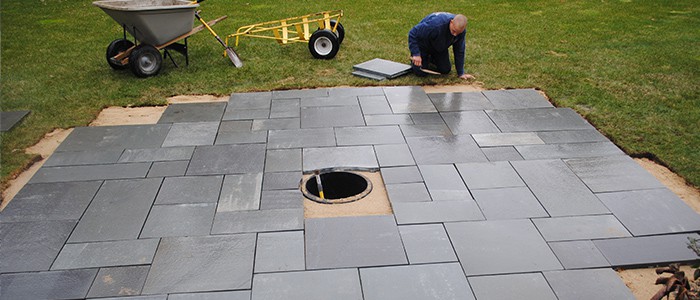Giving your backyard a facelift is a good idea. Installing a patio can improve your home’s curb appeal and give you a functional space. But unpredictable weather, fluctuating budgets, and picking the perfect materials can make this project quite challenging. If you’re in Georgia and searching for “patio installation atlanta,” you’re likely wondering how to time everything just right, so your outdoor space isn’t just functional but also looks amazing year-round. The good news is that a little seasonal strategy can make all the difference. In this article, you’ll learn about three practical seasonal tips that will save you headaches and keep your patio looking pristine.
1. Spring: Prep for Growth and Weather
Spring is arguably the most exciting season to plan a patio. The weather starts to warm, the sun sticks around a little longer, and there’s a fresh energy in the air. But here’s the thing. Spring also brings its own headaches. Rain is unpredictable, and if your patio’s foundation isn’t prepared for wet soil, you could be dealing with uneven settling later on.
One tip? Start with proper drainage. Whether you’re working with natural stone, concrete, or pavers, ensuring water won’t pool around your patio is essential. You don’t want soggy spots that ruin your furniture or make your patio slippery. Even a slight slope away from your house can prevent long-term damage.
Next, consider your landscaping. Spring is when gardens explode with growth, so leaving space for plants or adding raised garden beds can complement your patio design. You’ll thank yourself later when everything comes together harmoniously. It’s tempting to just throw down pavers and call it a day, but taking the time to integrate your patio with your landscape now saves a lot of headaches in the summer.
2. Summer: Embrace Materials That Beat the Heat
Summer is prime patio season: barbecues, gatherings, and long evenings outside. But summer heat can be brutal, especially if your patio materials weren’t chosen with the sun in mind. Hot surfaces can be uncomfortable to walk on, and some stones or tiles can crack under intense heat if not installed properly.
Think about materials with heat resistance. Concrete, flagstone, and certain ceramics tend to hold up well under intense sun. And don’t forget shading! Pergolas, retractable awnings, or strategically placed umbrellas not only keep your space cool but also protect the materials from premature fading. A little planning here will let your patio stay enjoyable.
Also, you want to pay attention to outdoor furniture placement. The way you arrange tables, chairs, and loungers can impact how people move and interact with the space. You don’t want a beautifully designed patio that’s impossible to navigate because everything is jammed together. Summer is about living outdoors comfortably, after all.
3. Fall: Focus on Maintenance and Protection
Autumn brings cooler temperatures and, for some regions, a ton of falling leaves. It’s a perfect time to think about maintenance, because what you do in fall directly affects how your patio weathers the winter. Leaves and debris left to sit can stain porous surfaces, and moisture trapped underneath can encourage moss or mildew.
A simple cleanup routine goes a long way. Sweep the patio regularly, hose it down when needed, and inspect for any small cracks or loose stones. These minor issues are easier to fix now than after a harsh winter, trust me. You don’t want to face spring with a patio that’s already deteriorating.
4. Winter: Plan for Durability and Practicality
Winter is the season when patios see the least use, but ironically, it’s when planning matters most. Cold weather, frost, and even occasional ice can wreak havoc on your patio if it’s not built to withstand it. Materials expand and contract with temperature swings, so ensuring your installation accounts for that is key.
If you’re installing a new patio during winter, focus on durable, low-maintenance options. Concrete, brick, and treated stone tend to perform better than wood in freezing temperatures. And don’t skimp on the foundation. Proper base layers with compacted gravel and sand are essential to prevent shifting.
Wrapping It Up
Your patio is an investment in comfort, aesthetics, and your property’s value. Timing and seasonal awareness are critical steps that can save you money and frustration. Whether it’s spring drainage, summer heat management, fall maintenance, or winter durability, each season offers its own lessons and opportunities. With a bit of planning and the right timing, your outdoor space can become your favorite place to be, rain or shine, summer heat or winter chill.


